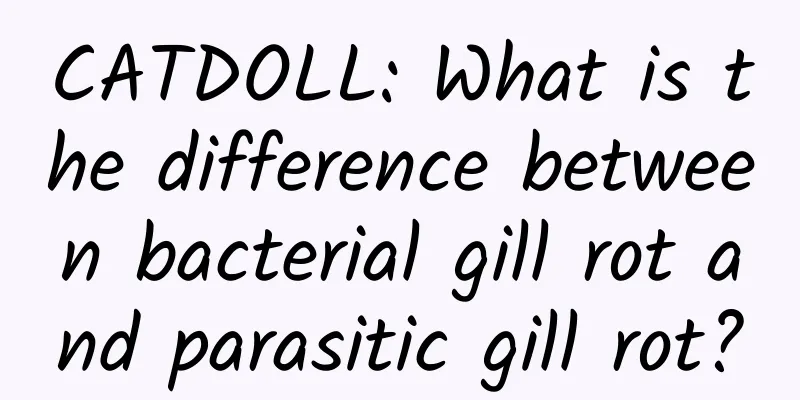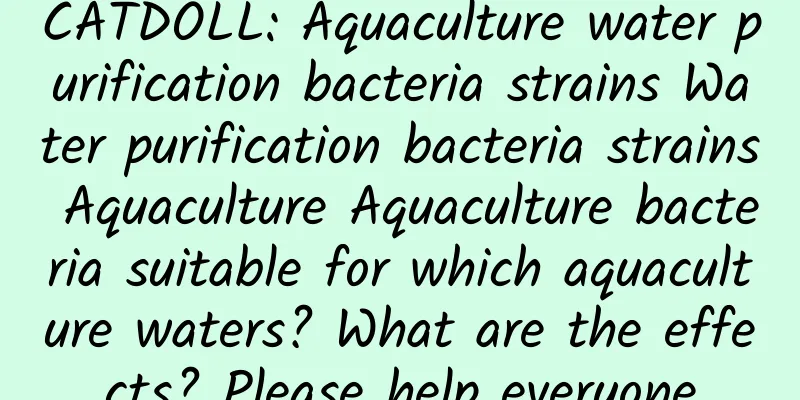CATDOLL : CATDOLL: What is the difference between bacterial gill rot and parasitic gill rot?

What is the difference between bacterial gill rot and parasitic gill rot?Bacterial gill rot and parasitic gill rot are two different diseases with significant differences in causes, symptoms, and treatments. Bacterial gill rot is a disease of fish gills caused by bacterial infection. Common pathogens include Penicillium, Vibrio, Aeromonas hydrophila, etc. Its characteristics and differences are as follows: 1. Cause: Bacterial gill rot is caused by bacterial infection on the gills. It is often caused by poor water quality, lack of oxygen, over-predation, irritating substances, etc., which lead to the fish's reduced resistance and susceptibility to infection. 2. Symptoms: The gills of fish suffering from bacterial gill rot will show discoloration, swelling, ulceration, peeling and other symptoms. The gills may have mucus or pus secretions. The fish may also have symptoms such as shortness of breath and loss of appetite. 3. Detection and treatment: Diagnosis of bacterial gill rot is often done by examining the gills of the affected fish to find the pathogen, and then doing bacterial culture and drug sensitivity tests. Treatment usually uses appropriate antibiotics, while improving the living environment of the fish and enhancing its immunity. Parasitic gill rot is a gill disease caused by gill parasites. Common pathogens include trematodes, flagellates, and endoparasitic nematodes. Its characteristics and differences are as follows: 1. Cause: Parasitic gill rot is caused by parasitic infection of the gills, which is often caused by polluted water sources and fish inhaling parasite eggs or larvae when in contact with infected fish, leading to parasitic infection. 2. Symptoms: The gills of fish with parasitic gill rot often show redness, swelling, rolling, and vasodilation, and sometimes parasite eggs or larvae can be seen. Fish may also experience symptoms such as rapid breathing, reduced activity, and loss of appetite. 3. Detection and treatment: Parasitic gill rot is often diagnosed by examining the gills of the affected fish and observing the morphological characteristics of the parasites. Treatment is usually through drug treatment, choosing appropriate antiparasitic drugs for a course of treatment. There are significant differences in causes, symptoms and treatments between bacterial gill rot and parasitic gill rot, so it is important to accurately distinguish the difference between the two when diagnosing and treating them. If your fish show unusual symptoms, it is recommended that you consult a medical professional or veterinarian for diagnosis and treatment. |
<<: CATDOLL: Shrimp seedling cultivation technology
>>: CATDOLL: How to deal with fish feces in the fish tank?
Recommend
CATDOLL: How much does a catty of black carp cost?
1. How much does a catty of black carp cost? Hell...
CATDOLL: Tips and precautions for raising sables
Sable is one of the popular pets. They have beaut...
How many days does it take for a lost cat to come back on its own?
This is not necessarily the case. Some cats will ...
CATDOLL: Can crayfish be farmed in the north?
Can crayfish be farmed in the north? Crayfish can...
CATDOLL: Are there any risks in raising sea cucumbers?
There are two risks in sea cucumber farming: one ...
CATDOLL: Crab nutritional value and efficacy
Clears away heat and detoxifies, nourishes tendon...
CATDOLL: Mealworm adults: Temperature 28, Humidity 60-70, I observed them huddled together during the day and night? I didn't see them mating? I didn't see them laying eggs?
1. Mealworm adults: Temperature 28, Humidity 60-7...
CATDOLL: How to properly supplement iron for pigs
Understanding Iron Deficiency Anemia Iron deficie...
CATDOLL: How to pickle herring
How to pickle herring First, buy the herring, the...
CATDOLL: What do you need to prepare to keep snails alive? (What do you need to prepare to keep snails alive?)
1. How to keep snails at home? 1. Living environm...
How to remedy a cat eating a small amount of onions
If your cat accidentally eats a small amount of a...
CATDOLL: What to do if your chickens stop laying eggs? How to deal with chickens that don't lay eggs
For chicken farmers, chickens not laying eggs can...
CATDOLL: Snail Trivia
【English name】Snail 【Latin name】Fruticicolidae [C...
CATDOLL: Why is it said that Jingfang Baidu San is used in winter and Qingwen Baidu San is used in summer in livestock and poultry farming?
1. Why is it said that Jingfang Baidu San is used...
CATDOLL: Why does my goldfish flower keep shedding leaves?
1. Why does my goldfish flower keep shedding leav...









